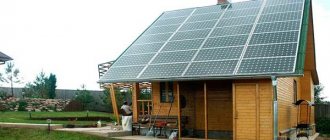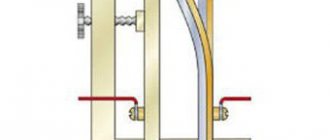The traditional kitchen stove is the main cooking tool for millions of Russians. In fact, it consists of 2 devices combined in one body: a hob and an oven. The burners can be gas, electric or induction, the oven can be gas or electric. Many manufacturers offer combined models that allow you to combine the advantages of different heating methods.
Today, many people prefer to install a separate hob and oven instead of a stove. Independent connection is very convenient; it allows you to place the equipment in any convenient place in the kitchen. For many users, the question remains: how to legally and safely change a gas panel to an electric one? This article will discuss in detail all the intricacies of this process.
Why do you need to change your gas stove?
Many of us have been accustomed to cooking with gas since childhood. Blue fuel is the cheapest and most accessible source of energy for domestic needs. In most settlements, apartment buildings up to 10 floors high are connected to the gas main. Some even consider food cooked on gas to be tastier and healthier. However, in recent years, more and more people want to give up gas equipment.
Electric stoves and hobs do not emit combustion products into the air and produce much less soot than their counterparts. Modern models with glass-ceramic coating are equipped with convenient touch controls and a number of additional options. Electric ovens attract buyers with precise electronic temperature control, infrared grill, self-cleaning systems and a host of automatic recipes.
Today, the trend is for surfaces with induction hobs, characterized by high efficiency and safety levels, as well as incredibly convenient expansion zones. All these innovations force users to replace outdated gas equipment with new equipment.
The advantages of such changes
People who prefer electric stoves find a number of advantages in them. In what cases should all these people change their gas stove to an electric one? For example, if the following features and capabilities are important to them:
- Electric models are often more compact.
- When operating such a stove, oxygen is not burned out of the air. This means there will be no need for a powerful exhaust system.
- The apartment becomes safer and more environmentally friendly, since gas equipment is considered more dangerous to the health of users.
- Electric stoves have more functionality.
- Temperature conditions are set and regulated easily and simply.
- The temperature in electric ovens is distributed more evenly, which contributes to better cooking. In such ovens they do not burn, but are baked evenly.
Possible difficulties
Owners of private houses are lucky in this regard: they can install any equipment, as long as they do not exceed the permissible power consumption of electricity. But replacing a gas surface with an electric one in a high-rise apartment is much more difficult. The problem is that the presence of gas appliances is recorded in a number of official documents, including the apartment plan and the registration certificate of the house. Therefore, to legally change equipment, you need to obtain permission from the relevant structures. For example, dismantling of an old slab can only begin after agreement with the fire service of the Ministry of Emergency Situations.
Do I need permission?
Everything that is written in the apartment passport, when moved or replaced, relates to redevelopment, therefore any technical changes must be approved by the relevant authorities with the issuance of official permission.
Important! Each owner who has unauthorizedly made various reinstallations is subject to administrative penalties (Law of the Housing Code of the Russian Federation, Art. 29).
The gas stove must be indicated on the plan of the technical inventory bureau (BTI), registered in the registration certificate of the house and apartment, therefore, it is necessary to notify the relevant organizations about replacing it with another product, and coordinate this redevelopment with them.
How to obtain permission to change the hob?
Anyone who wants to replace gas equipment in their apartment faces certain difficulties. All owners must agree to disconnect from gas. Only repair specialists from the gas organization have the right to dismantle the old stove. Their services (cutting and welding of the gas pipeline) are paid for according to a pre-drafted agreement.
For owners of electric hobs, the law provides for a discount on electricity bills (30% discount). But in order to revise the tariff for an individual apartment, it is necessary to obtain the consent of 2/3 of the neighbors, for which a meeting of residents should be held and their signatures collected. The next step is to contact the management company, which should help you resolve all issues with city services. The general procedure looks something like this:
- filing an application with the Criminal Code;
- obtaining permission from the gas organization to replace equipment;
- meeting of residents and collection of signatures (minimum 2/3);
- obtaining permission from the electricity supplier to increase the power of the house from 5 to 10 kW;
- concluding a new agreement with a branch of the public service center in your region.
Replacement procedure
Once all permits have been received, you can begin replacing the hob. First of all, the apartment is disconnected from the gas main, then a special 380 V cable is supplied to the location of the new equipment and the socket is installed. That's it, now you can finally connect an electric or induction hob (stove).
You should not try to replace equipment yourself, trying to save money. To ensure that everything is done professionally, it is better to use the services of qualified specialists (gas workers and electricians). Only in this case can you and your neighbors be confident that the new devices are connected correctly and are safe. Upon completion of the work, do not forget to draw up a certificate of completion of the reconstruction with the housing inspectorate.
Connection to a three-phase line
Everything is the same here, however, with the exception of several components:
- You will need a five-core cable (instead of a three-core):
- 3 wires, one for each phase;
- 1 core – to zero;
- 1 core - for grounding.
The cores are attached to each phase separately. We no longer need any jumpers here. You should be careful when connecting the cable in the panel and connecting the same cable to the socket at the other end. It is vitally important to observe the color coding of the cores so as not to accidentally connect a cable corresponding to zero or grounding in the panel to the phase socket in the socket. (It is recommended to write it down.)
- You will need a three-phase power socket and an SSI-125 plug, designed for a rated current of 32 Amperes. The operating voltage of such an outlet is 380 Volts. Therefore, you should be especially careful with it during installation and startup. Degree of protection – IP It is secured with four self-tapping screws.
An alternative solution to the problem
As you already understand, replacing a gas stove with an electric one is a long and labor-intensive process. Because of this, many users may be tempted to do this secretly. However, such a decision is fraught with serious risks: illegal installation of new equipment is fraught with a hefty fine, and when you try to sell an apartment, you are guaranteed to have problems (even after many years). If a switchboard suddenly catches fire due to a network overload, this can lead to smoke and even a fire. The blame for this incident will fall on the owner of illegal electrical equipment.
There is an alternative option - buying a combined hob (stove). On the market you can find many devices with a combined work table that can accommodate both gas and electric (induction) burners. A striking example is the PM6721WLDX and PM6912WLDR models from SMEG. The ratio of gas and electric burners can be different: 1 to 1, 1 to 2, 1 to 3, 1 to 4, 2 to 2.
If you install a combined surface, you will not have to give up gas and be afraid of a power outage. At the same time, you will be able to take advantage of all the advantages of different energy sources. This solution to the problem does not require the preparation of a package of documents and permits from various city services. A combination stove is a simple, convenient and safe way out of the situation.
Preparing the wiring
It was no coincidence that the conversation about wiring came up at the very beginning of the article. Firstly, the security of the entire system depends on it. It is necessary not only to correctly select wires with the required cross-section of cores and the material from which they are made, not only to correctly build cable channels, but also to correctly connect the circuit, depending on the selected type. Secondly, when connecting an electric stove, 98% of the total time will be spent organizing and monitoring the correct connection of this device to the network. So, when talking about connecting the stove, we mean proper installation of the electrical circuit.
So, electrical circuit diagrams are divided into 2 main types:
Loop wiring
With this organization, the cable returns back to the power panel. It turns out that all electrical appliances that will be powered from this cable will be connected to each other in series. However, we all know that parallel connection of consumers is practiced in everyday life. This is what makes it possible to withstand a voltage level at any point in the wiring equal to 220 Volts. Almost all electrical devices are designed to work with just this voltage, and any deviation gives rise to an off-design mode of operation (which is not covered by the warranty during repairs). What can a serial connection be useful for? There may be several reasons:
- Physical limitation on power consumption. The situation of an individual residential building is considered. These are built mainly outside the city, and sometimes there the situation “with light” is not a fountain. Either some kind of limit is administratively imposed on the house, or a power take-off limiter is installed, or there are simply no extra kilowatts in the network. In other words, if there is a situation of energy shortage, then it makes sense to connect some devices that could potentially operate at reduced voltage in series.
- The need to reduce the operating voltage in each consumer. Sometimes it makes economic sense to use less powerful appliances (for a variety of reasons). A serial connection allows you to lower their voltage, reducing the intensity of energy consumption.
The loop chain provides a significant safety benefit. It is limited in power, and most importantly, the current flowing in it will always be constant. Therefore, the consequences of a short circuit are much less destructive.
An electric stove connected in this way will lose power (i.e. heating intensity) if other consumers are connected to the same circuit. In general, electric stoves with a power of no more than 3 kW are usually connected to loop-shaped (ring) circuits. The plug plug (like the entire circuit) must withstand a current of 13 Amperes. In situations of energy shortage, it is recommended to connect only heating devices to such a circuit.
Beam wiring
This is a two-core wire familiar to us all, the wires of which are connected to different contacts of the sockets. It provides parallel connection of all consumer devices. This ensures stability and calculated operation of all electrical devices involved. The circuit is capable of providing you with as much power as there are consumer devices connected to the network (within the limits of the wire conductor capacity, of course).
When organizing circuits of both types mentioned, an electrical cable must be used with grounding. It should also be borne in mind that to power the slab with radial wiring, you should use a cable only with copper conductors (however, this is desirable everywhere), with a cross-section of at least 6.0 mm2. The cable must withstand a current of at least 40 Amps.
Premium cooktops and ranges
If you are just selecting kitchen appliances, pay attention to SMEG brand products. The corresponding section of our website presents ultra-modern surfaces with gas, electric and induction burners (heating zones can be from 1 to 6). High-quality materials are used to cover the desktop: enameled steel, tempered glass and glass ceramics. There are models with touch and mechanical controls (rotary switches).
You can choose a hob of any size: 30, 45, 60, 75 or 90 cm wide. Many devices are equipped with a WOK burner, which allows you to cook traditional Asian dishes. Induction surfaces with integrated hood (installed in the center of the desktop) are available for order. Multifunctional cooking centers (for example, models TR4110BL1 and CPF9GPR) have high performance and a lot of additional options. Even professional chefs will appreciate their capabilities.
Impeccable design
SMEG products are made in Italy from durable and environmentally friendly materials. Bright, memorable design is a characteristic feature of premium technology. Hobs are produced within several design collections: Coloniale, Cortina, Linea, Classica, Victoria, Dolce Stil Novo. The variety of colors is impressive, the following colors are available: white, black, silver, stainless steel, cream, copper, anthracite, oats, brass. The most demanding client will be able to choose the ideal option for any classic or modern interior.
The collaboration of Italian brand specialists with outstanding contemporary designers and other companies has resulted in the creation of exclusive products. The line of retro equipment “50s style” has become the hallmark of the brand, recognizable and revered all over the world. In collaboration with a famous car manufacturer, the SMEG Fiat 500 designer minibar was created, available in different colors.
The result of the collaboration with Dolce&Gabbana was a special series of Art refrigerators (more than 100 models), as well as the one-of-a-kind collections Divina cucina and Sicily is my love.











